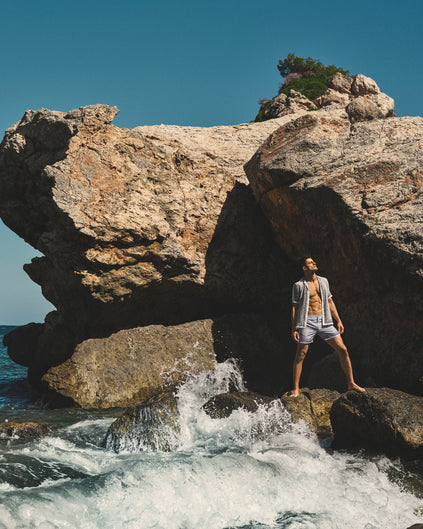
GRAPHITE
-

Adventures in style with karl shakur & morgan motor company
Read more about Karl NdieliStay adventurous. It’s a mantra we learnt from Karl Ndieli (aka @karl_shakur) and it’s something we, at Orlebar Brown, have decided to live by.
-

swim short style guide
Find your perfect fitPairing Orlebar Brown swimwear to your body and personality.
-

Villa Treville
Read more about Villa TreVilleOur 007 collection campaign shoot featuring model and actor Justice Joslin was photographed at Villa TreVille by English photographer and film director Greg Williams.
-

Driven by Design
Read More about LamborghiniRevisiting the Orlebar Brown x Automobili Lamborghini Capsule Collection.
-

A CONVERSATION WITH PETER PHILLIPS
Read More about Peter PhillipsWith a shared passion for world-class travel destinations, Slim Aarons, sunshine, and of course, Pop art, we were delighted to catch up with Peter to chat about all three.
-

A STYLE GUIDE FOR MEN’S POLO SHIRTS
Find your perfect poloEverything you need to know about choosing the right Orlebar Brown Polo Shirt.
-

CELEBRATING 007: 60 YEARS OF JAMES BOND
Read more about James BondIn the last 60 years, 007 has had an impact on filmmaking, culture, and society at large.
-

Can linen help MAKe FASHION MORE SUSTAINABLE
Read more about the Love linen campaignWe have only one world and so taking care how we use its resources is imperative for our collective future.
-

Bulldog Swim Shorts: Elegance in Swimwear
Read more about our signature styleBulldog. Embodying the elegance and adaptability that our brand stands for.
-

ADAPT WITH SHARK | THE DESIGN BEHIND THE CAPSULE
Read more about the capsuleEmbark on an adventure with us as we explore our Shark collection.
-

14 Things You Didn’t Know About Orlebar Brown
Read More about our HistoryDiscover the world of Orlebar Brown
-

Spotlight: Photographic Print Swim Shorts
Read more about our Photographic stylesExpertly tailored designs capturing iconic moments and timeless holiday style.
-

What Is Terry Towelling?
Read more about terry towellingLearn more about how terry cloth was reimagined into stylish resortwear.























































































































































































































































